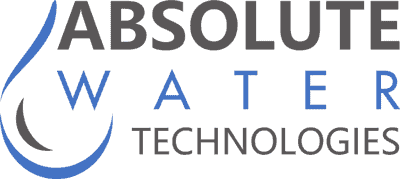Keeping Your Lab Water System Clean and Efficient
How Clean and Efficient Is Your Lab Water System? What water quality do you need and are you meeting it?
Many laboratories rely on absolutely pure or theoretically pure water treatment for sensitive applications in the medical and pharmaceutical applications.
Listed below are grades of high purity water requirements and their typical uses to help you determine what grade of water you need:
| Grade of Water |
Resistivity (M-cm) | TOC (ppb) | *Bacteria (CFU/ml) | **Endo- toxin (EU/ml) |
Typical Applications |
|
| Type 1+ | 18.2 | <5 | <1 | <0.03 | GF-AAS, ICP-MS, trace metal detection |
|
| Type 1 | >18 | <10 | <10 | <0.03 | High Performance Liquid Chromatography (HPLC), GC, AAS, Immunocytochemistry, mammalian cell culture, plant tissue culture | |
| Type 2+ | >10 | <50 | <10 | NA | General laboratory applications requiring higher inorganic purity | |
| Type 2 | >1 | <50 | <100 | NA | Feed to ultra-pure type 1 systems, feed to clinical analyzers, electrochemistry, sample dilution, media preparation, radioimmunoassay | |
| Type 3 | >0.05 | <200 | <1000 | NA | Feed to ultra-pure water type 1 systems, feed to washing machines, dishwashers, autoclaves | |
What system will give you the required grade of water?
There are many options when selecting a centralized water system. For more information please refer to our design of a high purity water system. There are many qualified manufactures of high purity water equipment such as Ameriwater, Elga Lab Water Systems and Millipore /EMD Millipore.
For limited use there are a number of small point of use systems that may provide you with the quantity and quality of water you need from a mere tap water source or from a supplied pretreated water source from a central system. After selecting your water equipment, two main concerns are keeping it clean and efficient.
ENSURING YOUR SYSTEM IS CLEAN AND EFFICIENT
After you select the equipment, you need to consider a proper maintenance program. Questions you need to ask yourself and your organization:
- Do we understand what water quality we need to obtain? What are the minimum requirements we can tolerate?
- What happens if the system goes down and what is our contingency plan?
- What is the equipment manufactures requirements and suggestions for proper maintenance and cleaning?
- What SOP’s do you have in place to meet the manufacturer’s recommendations?
- Is your service supplier actually completing the required maintenance and what parts of the service do you need to complete in their absence?
REGULAR SYSTEM SANITIZATION – Keeping Your System Clean
Central Loop System
What procedure do you use and in what time frame do you complete full loop sanitizations? Based on the materials of construction you have for your loop, there are many methods that can be used such as ozone, chemical sanitization, or heat/steam sanitization methods. During this sanitization, are your hydro-philic and hydro-phobic tank vent filters and post sub-micron filters changed as they should be to mitigate premature recontamination? Best practices should be established based on your facilities loop size, materials of construction, recirculation method etc… to determine the proper sanitization frequency. Acceptable minimums should be determined to prevent biofilm growth which can be a hotbed for both bacterial contamination and subsequent endotoxin proliferation.
Point of Use Lab Systems
Some systems, such as Millipore, use an automatic sanitization module (ASM) in their storage tank to make staying on top of sanitization needs easier. Are you or your service provider replacing the module by manufactures recommendations? This is often an overlooked replacement item on service contracts.
Are you sanitizing your storage tank and reverse osmosis modules based upon the manufacturer’s recommendations? Are you sanitizing monthly or waiting for a routine service provider to complete a sanitization? Are they actually thoroughly cleaning your system for you? How do you test for contamination?
The leading providers on point of use lab systems: Elga, Millipore / Millipore EMD and Thermofisher, typically have a method for the end user to sanitize their system regularly with ease, but it must be carried out properly and thoroughly. This procedure can mean some scheduled downtime that many locations do not schedule or have the time to schedule on an ongoing basis.
Bacterial growth can sneak up on you and where a system has been left unmonitored or poorly maintained, the contamination can be too far gone to turn around quickly and may have tainted test results before detection.
KEEPING YOUR SYSTEM EFFICIENT AND COST EFFECTIVE
Have you noticed that you are going through too many deionization polishing packs? Going through more polishing packs can not only cost you time in a busy laboratory, but it can also cost you money that literally is going down the drain. It could be increased usage, but it can also indicate a few more logical and probable issues that are causing this:
If your system is being pretreated by another system, is that system working properly? Monitoring your feed/source water is a great idea to ensure the issue is not coming from outside of the laboratory.
Does the company that services your system calibrate the unit, monitor performance and make adjustments to make sure the system is operating properly? A poorly operating system that, for example, does not have properly operating membranes can produce very poor water quality. This results in not only sending more water than it needs to down the drain, but also producing poor quality water making your polishing packs work harder, and therefore exhausting them prematurely.
For help setting up a maintenance schedule or to answer any of your high purity water system needs please contact us Absolute Water Technologies. 1-866-986-6860 or at info@absolutewatertech.com

